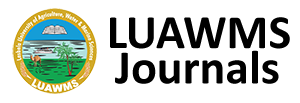Investigating the Perceptions of Pakistani ESL Students about Flipped Learning
Keywords:
Quasi-experimental, Flipped learning wheel framework, Pedagogical implications, technological advancement, global villageAbstract
Technology has now become a central part of the field of teaching. The flipped classroom is a modern instructional method in which students watch videos on their own and teachers spend the classroom time engaging their students in different activities, quizzes, presentations, feedback, questions, and discussions. Different universities in Pakistan have incorporated this learning method in their classrooms and specifically in language classrooms in 2020 during the post Covid-19 environment. The chief purpose behind this investigation is to examine the perceptions of students about flipped learning for ESL learners. This research is conducted in the milieu of framework given by Chen et al. (2014). This research is quantitative in which a cross-sectional survey research design is used. Through the questionnaire a sample of 200 students was taken for this research. The responses of the students were processed through the SPSS software. The results show that flipped learning (FL) is a new technique of teaching. Most of the students use this technique but are unfamiliar with its name. The students have positively perceived the technique of flipped learning and this research would be useful for teachers, researchers, and students. Lastly, this research would be valuable for operative teaching.
References
Acarol, K. (2019) A study on the effectiveness of flipped learning model. Kara Harp Okulu Bilim Dergisi, Science Journal of Turkish Military Academy, 29(2), 267-295.
Afrilyasanti, R., Cahyono, B. Y., & Astuti, U. P. (2016). Effect of flipped classroom model on Indonesian EFL students’ writing ability across and individual differences in learning. International Journal of English Language and Linguistics Research, 4(5), 65-81.
Albanese, J., & B. Bush, S. (2015, March 30). The Flipped Classroom: An Avenue for Student- Centered Learning. National Council of Teachers of Mathematics. Retrieved from https://www.nctm.org/Publications/Mathematics-Teaching-in-Middle-School/Blog/The-Flipped-Classroom_-An-Avenue-for-Student-Centered Learning/#:%7E:text=Student%2Dcentered%20learning%2C%20via%20the,work%20at %20their%20own%20pace.
Aljaraideh, Y. (2019). Students' perception of the flipped classroom: A case study for private universities in Jordan. JOTSE: Journal of Technology and Science Education, 9(3), 368-377. https://doi.org/ 10.3926/jotse.648
Arnold-Garza, S. (2014). The flipped classroom teaching model and its use for information literacy instruction. Communications in Information Literacy, 8(1),7-22. 0.15760/comminfolit.2014.8.1.161
Baytiyeh, H., & Naja, M. K. (2017). Students’ perceptions of the flipped classroom model in an engineering course: a case study. European Journal of Engineering Education, 42(6), 1048-1061. https://doi.org/10.1080/03043797.2016.1252905.
Chen, Y., Wang, Y., & Chen, N. S. (2014). Is FLIP enough? Or should we use the FLIPPED model instead?. Computers & Education, 79, 16-27. https://doi.org/10.1016/j.compedu.2014.07.004
Danker, B. (2015). Using a flipped-classroom approach to explore deep learning in large classrooms. IAFOR Journal of Education, 3(1), 171-186.
Fauzan, A., & Ngabut, M. N. (2018). EFL students’ perception of flipped learning in writing class. Journal on English as a Foreign Language, 8(2), 115-129. http://dx.doi.org/10.23971/jefl.v8i2.792.
Inan, N. K., Balakrishnan, K., & Refeque, M. (2019). Flipping Perceptions, Engagements and Realities: A Case Study. Turkish Online Journal of Distance Education, 20(1), 208-222. https://doi.org/ 10.17718/tojde.522717.
Khanova, J., McLaughlin, J. E., Rhoney, D. H., Roth, M. T., & Harris, S. (2015). Student perceptions of a flipped pharmacotherapy course. American journal of pharmaceutical education, 79(9).
Khlaisang, J., Teo, T., & Huang, F. (2019). Acceptance of a flipped smart application for learning: a study among Thai university students. Interactive Learning Environments, 1-18. https://doi.org/10.1080/10494820.2019.1612447.
Newman, G., Kim, J. H., Lee, R. J., Brown, B. A., & Huston, S. (2016). The perceived effects of flipped teaching on knowledge acquisition. Journal of Effective Teaching, 16(1), 52-71.
Nouri, J. (2016). The flipped classroom: for active, effective, and increased learning–especially for low achievers. International Journal of Educational Technology in Higher Education, 13(1), 1-10.
Ozdamli, F., & Asiksoy, G. (2016). Flipped Classroom Approach. World Journal of Educational Technology: Current Issues, 8 (2), 98-105.
Shi-Chun, D., Ze-Tian, F. U., & Yi, W. A. N. G. (2014, April). The flipped classroom–advantages and challenges. In 2014 International Conference on Economic Management and Trade Cooperation (EMTC 2014). Atlantis Press.
Walsh, K. (2014, February 1). Exciting Technology-Enhanced Teaching and Learning Approaches That Teachers are Embracing in 2014. Emerging Education Technologies. Retrieved from https://www.emergingedtech.com/2014/01/8-exciting-technology-enhanced-teaching-and-learning-approaches-that-teachers-are-embracing-in-201.
Downloads
Published
How to Cite
Issue
Section
License
Copyright (c) 2023 Azhar Pervaiz, Fatima Rehman

This work is licensed under a Creative Commons Attribution-NonCommercial-ShareAlike 4.0 International License.



